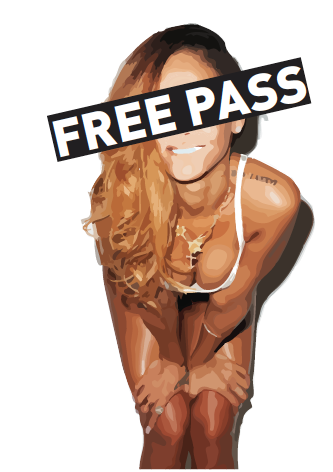Free pass
 By Ian Simon-Curry
In fashion, sex sells––clothes, that is. But when sex sells success, the industry looks the other way. Recent reports reveal a history of turning a blind eye when sex abuse becomes a professional currency.
By Ian Simon-Curry
In fashion, sex sells––clothes, that is. But when sex sells success, the industry looks the other way. Recent reports reveal a history of turning a blind eye when sex abuse becomes a professional currency.
Earlier this year, 17-year-old Meghan Chereek ran away from home after a fight with her father. Seeking fame and fortune, she moved to Los Angeles where she met Jimmy Sommers, CEO of the clothing brand Wildfox Couture, in a restaurant. He seduced her with promises of modeling and design work, wrenching her into the Hollywood lifestyle of booze, drugs, and sex.
She’s since filed a lawsuit, accusing Sommers of creating a hostile living environment after, unable to pay her rent, she had to move in with him. The suit claims that Sommers continued to demand sex from her and never provided her with the promised work. This isn’t news. “What she is alleging goes on in the fashion and entertainment industry all the time,” says Jeff Herman, Chereek’s lawyer.
Reports of similar behavior run rampant. Famed fashion photographer Terry Richardson has had a reputation for inappropriate sexual behavior for years. His provocative style of photography almost always features models and celebrities in the nude. In fact, a casting page on his website makes a standing request for models over the age of 18 who want to pose nude.
He's never been sued or convicted of sexual abuse, but a sufficiently large and continuous batch of complaints against Richardson suggest that his lasciviousness is quite real. Many models report that he requested they call him “Uncle Terry” and that he tends to be as nude as his subjects when shooting.
A February article from The Fashion Spot reports that model Charlotte Free defended Richardson in a since-deleted statement on her Tumblr blog, angrily calling out models who accuse him of abuse.
The post reveals a troubling attitude towards misconduct that permeates the industry. The notion that others are “waiting in line” to take the place of models unwilling to accept sexually inappropriate situations suggests that abuse is just part of the job. In such a sexualized industry, there seems to be a dangerously fine line dividing acceptable behavior and abuse. Many models fear speaking out about sexual harassment because it can mean losing professional connections and experience. And it’s not just models who are wary of speaking out either. A March 2010 Jezebel article collected stories about Richardson from industry insiders, all of whom spoke on the condition of anonymity, given the photographer’s powerful position in the fashion world.
One such anonymous source described how a friend of hers—a stylist who formerly worked with Richardson—saw him abusing young, naked Eastern European models, taking advantage of the fact that they spoke little English. The stylist was so ashamed and afraid to speak up that she quit working for him.
Though Richardson’s behavior is widely known, he continues to find work with influential magazines and brands. The industry willfully ignores sex abuse by those in its top tier.
Advocacy groups, such as the Model Alliance are taking strides to change things, aiming to improve working conditions for models and make it easier for them to report sexual harassment. Its Model Alliance Support system partners with the Actors’ Equity and the American Guild of Musical Artists to provide a way to discreetly report grievances via email.
This effort by the Model Alliance is admirable, and certainly is needed, but even more of an impact could be made if someone in a position of power at a magazine or brand would take a stand. Nothing would communicate a rejection of the fashion world’s current apathy towards sex abuse better than a well-known editor refusing to work with Richardson or anyone with a history of inappropriate behavior. But this industry that treats its most famed names like gods, it’s going to take some serious movement to knock them off their pervy pedestals. JM

